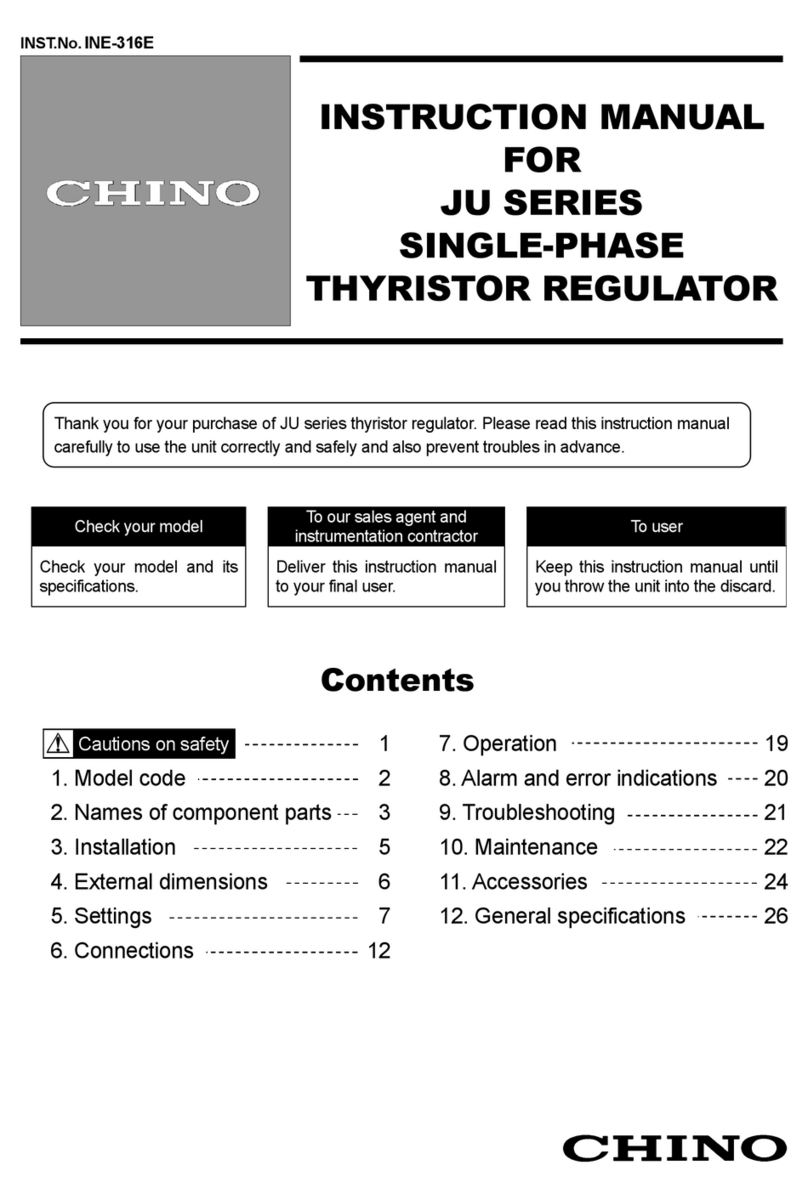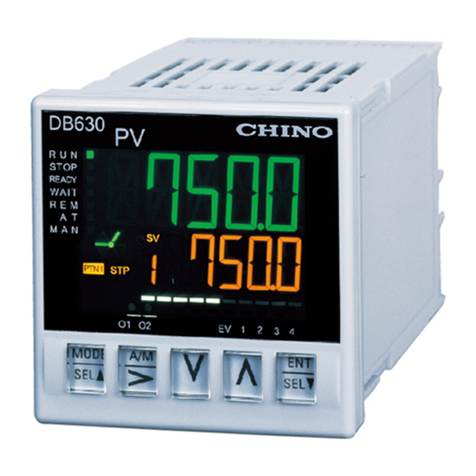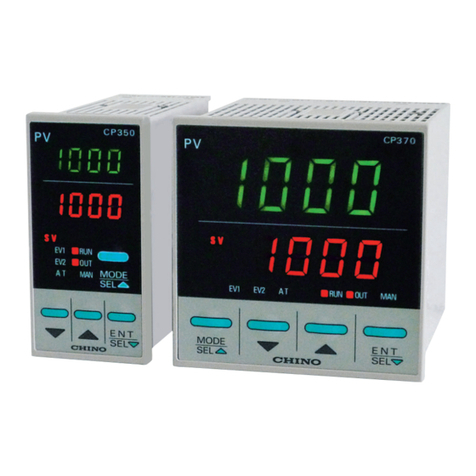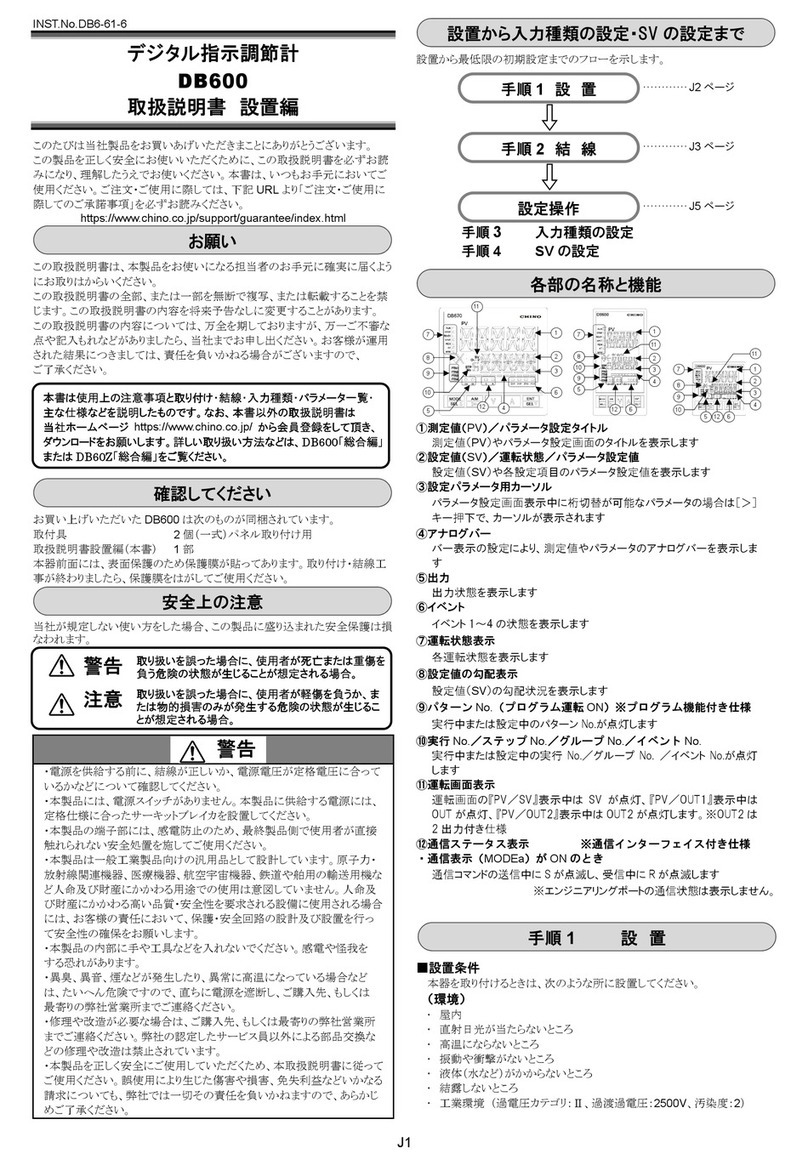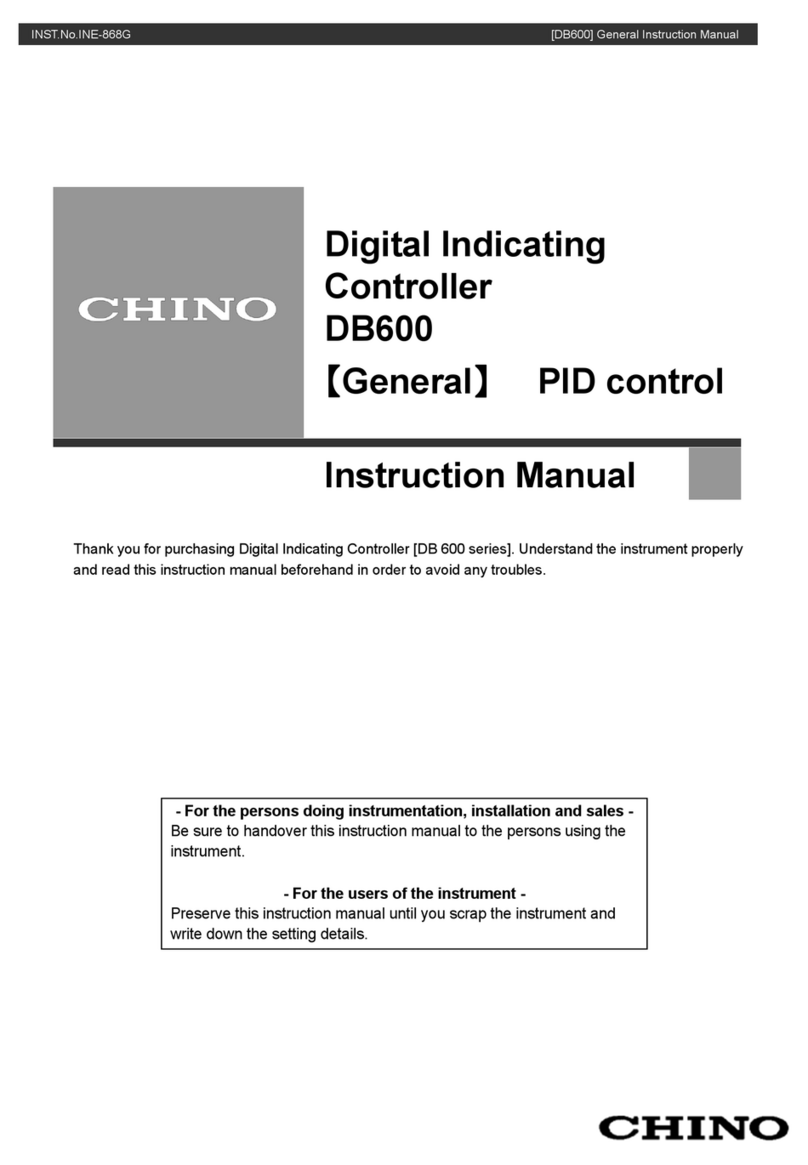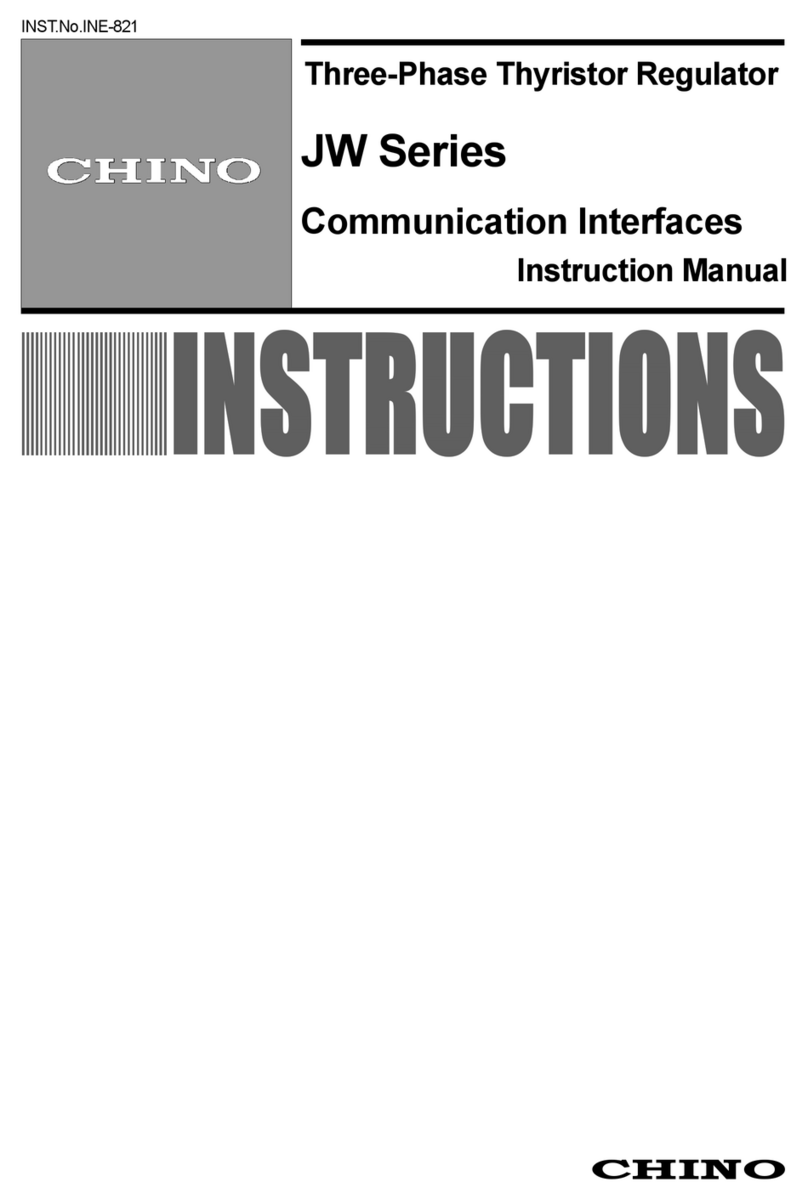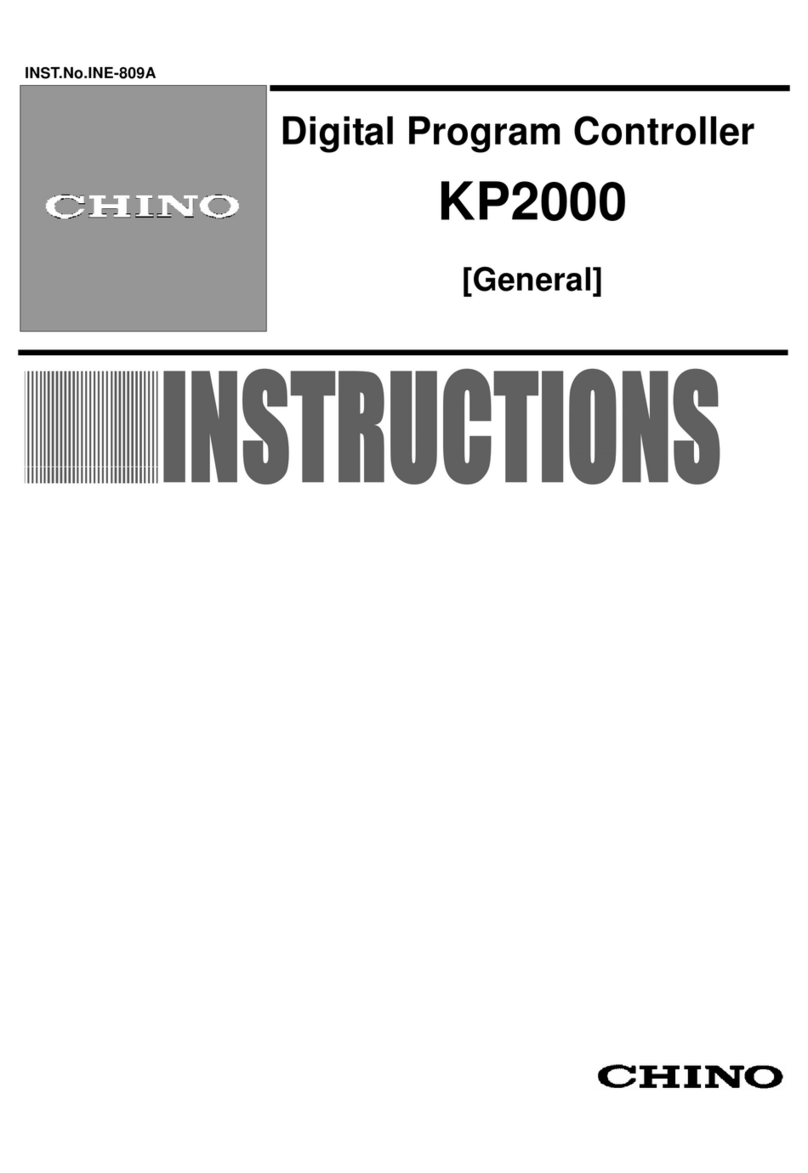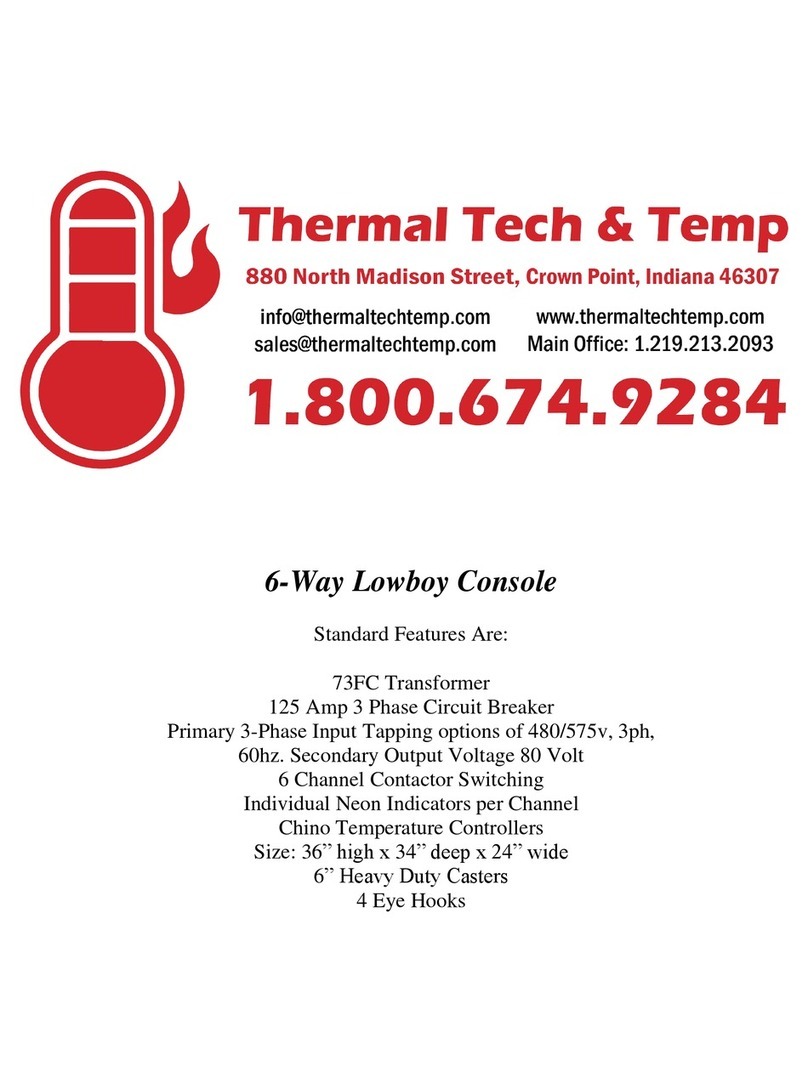
5
• The memory can store up to 1,000,000 (one million) entries.
If the number of setting times exceeds the limit, it cannot memorize the data. So frequent
transmission via communication is not recommended.
• When connecting plural slaves, the address (instrument number) must not be duplicated.
• When sending a command by Global address [95 (7FH)], the same command is sent to all the
slaves connected. However, the response is not returned.
• The instrument number and communication speed of the slave cannot be set by communication.
Setting command
• The settable range is the same as the one by keypad operation.
For communication command, refer to the communication command table of this manual.
• All commands are composed of ASCII.
• The data (setting value, decimal) is converted to hexadecimal figures, and ASCII is used.
The negative number is represented with 2's complement. When the data (setting value) has
a decimal point, the whole number without a decimal point is used.
Reading command
• All commands are composed of ASCII.
• The data (setting value, decimal) is converted to hexadecimal figures, and ASCII is used.
The negative number is represented by 2's complement. When the data (setting value) has
a decimal point, the response is returned as a whole number without a decimal point.
6. Modbus protocol
6.1 Transmission mode
There are 2 transmission modes (ASCII and RTU) in Modbus protocol.
6.2 ASCII mode
Hexadecimal (0 to 9,A to F), which is divided into high order (4-bit) and low order (4-bit) out of
8-bit binary data in command is transmitted as ASCII characters.
Data format Start bit : 1 bit
Data bit : 7 bits
Parity : Even/No/Odd (Selectable)
Stop bit : 1 bit/2 bits (Selectable)
Error detection: LRC (Longitudinal Redundancy Check)
Data interval : 1 second or less
(1) Message configuration
ASCII mode message is configured to start by [: (colon)(3AH)] and end by [CR (carriage return)
(0DH) + LF (Line feed)(0AH)]. (See Fig. 6.2-1)
(Fig. 6.2-1)
(2) Slave address
Slave address is an individual instrument number on the slave side and is set within the range
00H to 5FH (0 to 95).
The master identifies slaves by the slave address of the requested message.
The slave informs the master which slave is responding to the master by placing its own address
in the response message.
[Slave address 00H (broadcast address) can identify all the slaves. However slaves do not respond.]
(3) Function code
The function code is the command code for the slave to undertake the following action types (Table 6.2-1).
(Table 6.2-1)
Function code Contents
03 (03H) Reading the setting value and information from slaves
06 (06H) Setting to slaves
Function code is used to discern whether the response is normal (acknowledgement) or if any error
(negative acknowledgement) is occurred when the slave returns the response message to the master.
When acknowledgement is returned, the slave simply returns the original function code.
When negative acknowledgement is returned, the MSB of the original function code is set as 1
for the response.
(For example, when the master sends request message setting 10H to function code by mistake,
slave returns 90H by setting the MSB to 1, because the former is an illegal function.)
For negative acknowledgement, abnormal code (Table 6.2-2) below is set to the data of response
message and returned to the master in order to inform it that what kind of error has occurred.
Slave
address
Function
code Data Error check
LRC
Delimiter
(CR)
Header
(:)
Delimiter
(LF)

